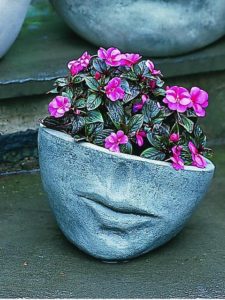Here, you will learn stuff about Compost and Composting 101, What is Composting, How it’s done etc.
Before we dive into Composting, we think great to define Composting as Wikipedia explains it:
The term “composting” is used worldwide with differing meanings. Some composting textbooks narrowly define composting as being an aerobic form of decompostion, primarily by microbes. For many people, however, composting is used to refer to several different types of biological process. In North America, “anaerobic composting” is still a common term, but in much of the rest of the world and in technical publications the more accurate term anaerobic digestion is used as the microbes used and the processes involved are quite different.
That was for Composting terminology. Now, let’s move on and learn more…
Composting can be best defined by recognizing the five good reasons it should be done.
It produces less waste. 30% of the waste stream is made up of food and yard waste. Water treatment facilities, landfills, and waterways will benefit from handling less waste when food scraps and yard trimmings are turned into compost instead of getting thrown away.
It results in less pest problems. The use of pesticides is decreased along with the reduced number of pests to deal with.
It conditions the soil. This allows water to be retained better in the soil, which results in the sustainable release of nutrients into the soil. As a result, plants grow healthier, yield better produce, and become more resistant to diseases and pests. Even clay and sandy soils can benefit from the soil-conditioning ability of compost. And beneficial organisms can take advantage of compost by feeding on it.
It saves money. Doing away with fertilizers and soil conditioners helps to cut back on expenses. Plants grown with compost also lets one enjoy fruits and vegetables with increased nutrient content.
It teaches an important lesson. Composting at home allows kids a glimpse of the cycle of life by studying nature.
Composting is easily done by following these tips:
1. Get the compost started. To speed up the composting process, grass clippings, chicken manure, comfrey leaves, and young weeds may be used.
2. Protect the compost from flies. Exposed compost material like fruit skins and vegetable scraps should be covered to discourage fruit flies. A great cover to use is an inch or two of grass clippings; for good measure, calcium or lime may be added. It is best to have a well-stocked supply of grass clipping nearby to address this need.
3. Get rid of unpleasant odors. This is easily done by preventing any meat scrap or bone from being included in the compost. Each addition of new compost material to the pile should be covered with grass or mulch and added with calcium or lime to neutralize odors; or dried leaves, straw, and peat moss to ward off the smell of ammonia.
4. Encourage steaming. Having a steamy compost pile is good news – it means that a significant number of microorganisms are doing their job in the composting process.
5. Fix a soggy compost pile. An early spring or winter can cause a compost pile to lose its proper carbon-nutrient balance by getting it soaked in water instead of simply becoming moist. This is prevented by covering the compost pile to anticipate the coming of spring rains. Drainage should be available if the compost is laid on the ground; a trench may also be provided to allow runoff of excess water.
To restore the activated state of the compost pile, carbon-rich materials should be added to aid the composting process in two ways: absorb the pile’s extra moisture and to bring back the balance of carbon and nitrogen levels (one part nitrogen and two parts carbon). Simply add a carbon material to the pile, turn over or fork out, and then add a nitrogen activator to speed things up.
6. Do away with clumping. Moisture inside the compost bin can cause wet grass clippings and leaves to clump. To deal with this problem and also to prevent reduced aeration, one must make sure that the leaves and grass are mixed thoroughly with all other composting materials by forking to break them apart or by gradually adding them to the lot.
7. Prevent raccoons from getting at the compost. Instead of setting traps or poisons, it is best to simply prevent them from getting near the compost pile. A makeshift wood or metal lid may be used, or a compost bin that comes with its own fitted lid may be bought.
8. Move it around. Nutrients from the compost can drip down from the bin after continuously watering the compost. These nutrients can still be utilized to enrich the soil in any area that the compost bin is placed.
9. Use compost as such. Compost is a soil additive, so it can’t replace soil as a medium for growing plants. Its purpose is to provide nutrients to the soil, from which the plants can receive and use them.





Comments on this entry are closed.